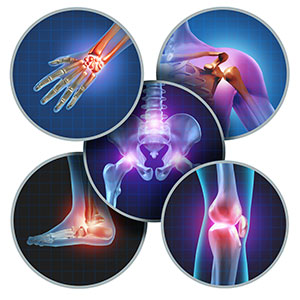By Shaun Lehmann, MD 
Edited by Mila McManus MD
The body is designed to heal itself. As we age, our bodies start to lose the ability to focus a sustained healing response to musculoskeletal injuries. Injuries can occur from multiple sources including trauma, repetitive stresses, or medications. The body’s healing response can also be diminished due to nutritional deficiencies, hormone deficiencies, and genetic conditions.
The field of Orthopedic Medicine is rapidly changing to now include many regenerative options aimed at improving our ability to heal. We are now learning that some of the traditional ways that we have been treating musculoskeletal pain and injuries may actually be causing problems by negatively affecting the body’s ability to heal itself. Steroid injections, for example, are now showing in research to decrease the local stem cell counts and could actually damage cartilage. NSAIDS (non-steroidal anti-inflammatory drugs) also have been shown to accelerate cartilage loss.
Regenerative medicine aims to accelerate our natural ability to heal after injury occurs. The goal of regenerative therapy is to optimize the cellular environment by stimulating growth factors and repair cells.
Some of these treatments include:
Point of Care Therapies (same day procedures)
Nutritional Growth Factor Stimulation
- Prolotherapy
- Ozone Therapy
Personal Cell Therapy (Autologous)
- Platelet Rich Plasma (aka PRP)
- Bone Marrow Aspirate
- Fat derived Mesenchymal cells – or VSF “vascular stromal fraction:”
Donation cellular therapy (Allogeneic)
- Umbilical Allograft Cells
- Amniotic growth factors
- Placental growth factors
Cultured Cellular Therapies (not a same day procedure… takes weeks to grow)
Nutritional stimulation treatments such as Prolotherapy and Ozone therapy aim to focus the body’s healing energies on the location that needs repaired. They aim to wake up the body’s local healing mechanisms by refocusing and restarting the healing process. These treatments can work well as long as the body is healthy, and the repair mechanisms are in working order.
Personal cellular therapies do the same as above; however, they also bring extra cellular workers to the job site. These treatments are usually deemed stronger than Prolotherapy and Ozone and are deemed relatively safe since the workers are your own cells.
Donation cellular therapies are from a donor person, are more potent than Personal cellular therapies, and are tested for safety (e.g., viruses such as HIV, hepatitis); however, the tissues are not tested for every potential infectious disease, so there may be some theoretical risk.
Cultured Cellular Therapies are not legal to use in the U.S. at this time, but it is legal to process and store these stem cells in the United States. One has to travel to another country to have the stem cells injected or infused. Cultured stem cells can be either Personal (autologous) or Donated (allogeneic).
There is a large body of research done on the efficacy of Prolotherapy and Platelet Rich Plasma, but more is still needed. Stem cells show so much promise that they are said to be “the future of medicine”.

